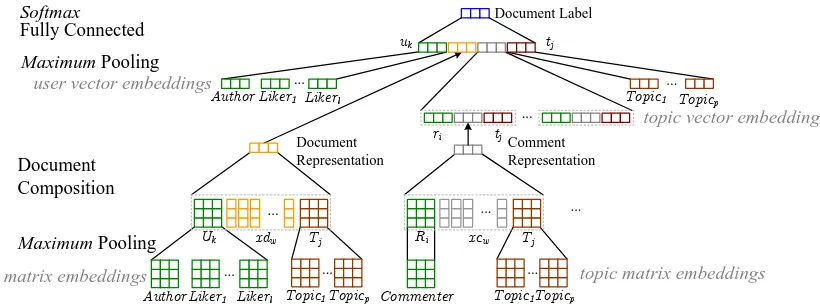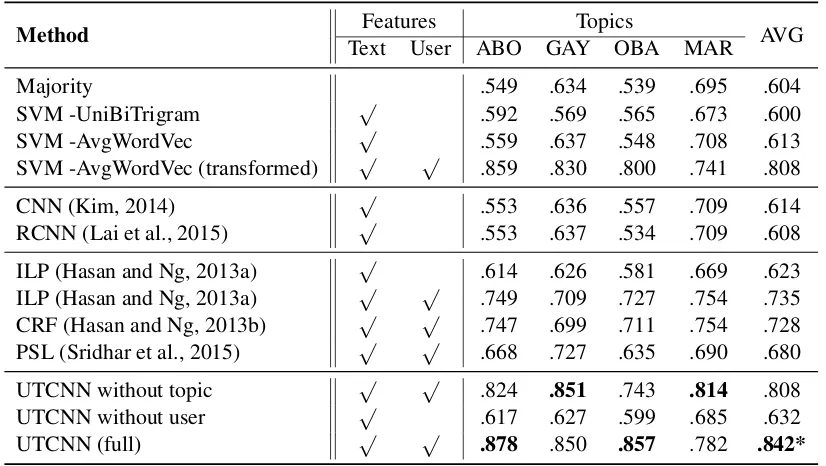UTCNN: a Deep Learning Model of Stance Classification on Social Media Text
Full text
Figure




Related documents
Our approach creates a prediction sub-model for each component and combines them using component de- pendencies obtained from an architectural model, e.g., PCM or SLAstic, into a
ARAMIS offers a process- oriented approach for the evolution and evaluation of software systems that relies on a run-time monitoring infrastructure to reconstruct the behavior of
Fakat, iyileşme sağlayacak kadar güçlü olan herhangi bir ilacın yanlış kullanılması durumunda, zehirlenmeye de neden olabilmesi gibi, reenkarnasyon öğretisi de
In the information block the student id, name application number, department s\he is employed in, attendance hours, salary rate, total month salary, supervisor approval,
Another paper [20] also discussed about utilizing methods and techniques of semantic web in the Intrusion Detection Systems. They recognize that many of
this claimed closeness between the citizen and the de- cisions being taken on his/her behalf becomes a reality thanks to the European citizens’ right to initiative which is
